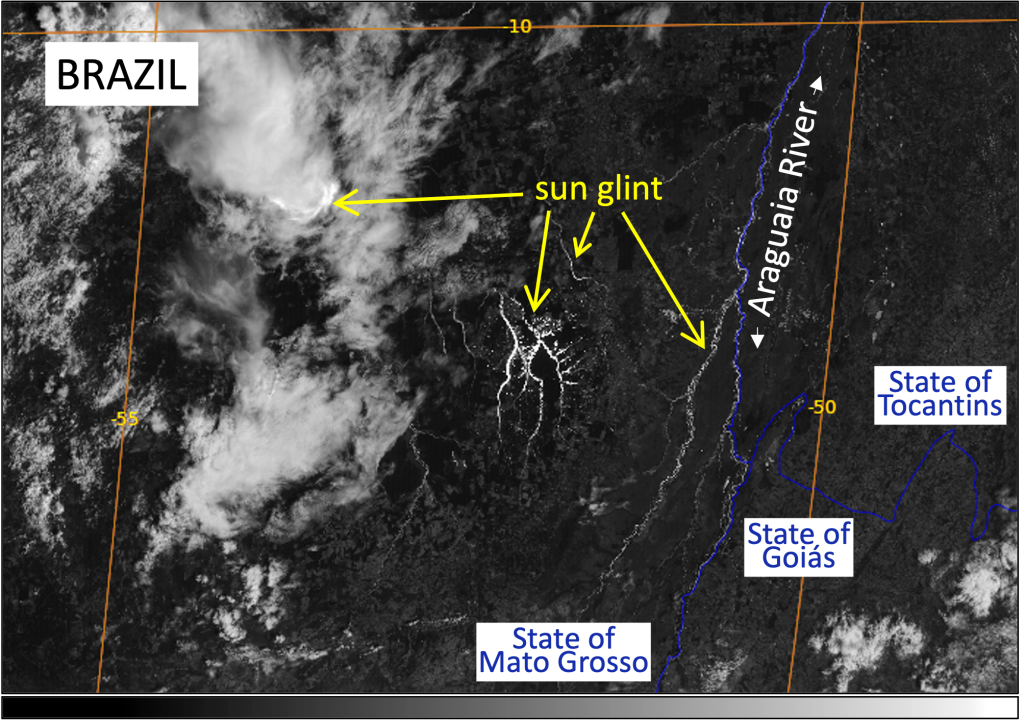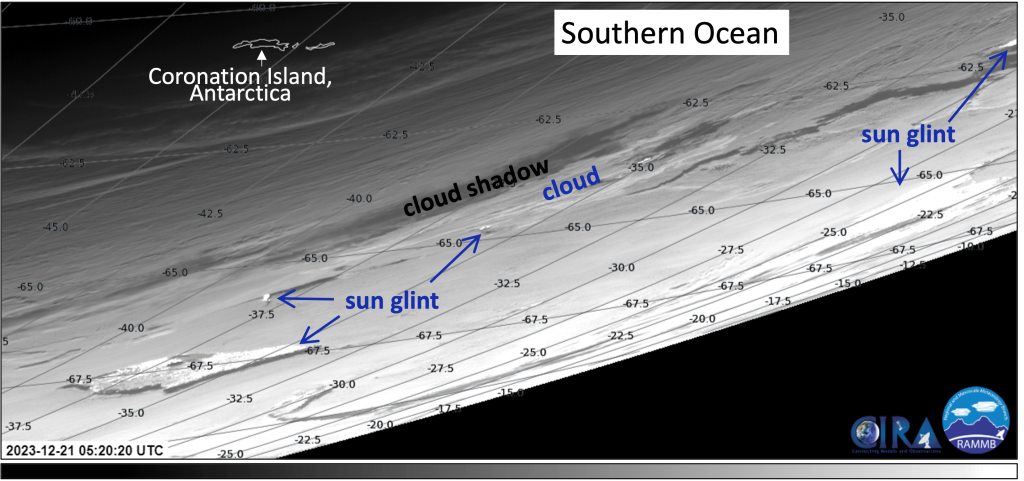Sun Glint During the Southern Hemisphere’s Summer Solstice
By Erin Sanders and Bernie Connell
This year the second solstice occurred on December 21, 2023. In Earth’s Northern Hemisphere this marks the start of astronomical winter and is the shortest day of the year in terms of possible daylight. In the Southern Hemisphere the opposite is true and is where we will turn our attention.
The Amazon basin in South America is the drainage basin of the Amazon River. It’s an extensive region with a river system that transports more water than anywhere else in the world. While we can explore the region with various satellite imagery and products at any time, there is one particularly interesting way to view it. Let me explain. Sun glint is an optical phenomenon that can be seen in visible and near-IR satellite imagery when sunlight is reflected off water surfaces towards the satellite sensor. It occurs with the right positioning between the Sun, Earth, and satellite viewing angle. While we typically notice sun glint over open ocean where it is the most obvious, it is not unusual to spot it over the continents if you know where to look. The following animation shows a small portion of the Amazon basin in Brazil, using recent GOES-16 0.64 µm visible imagery.
GOES-16 0.64 µm visible imagery over Brazil on December 18, 2023 from 12:00-14:30 UTC.
Here it is again for the same time period, but with GOES-16 3.9 µm imagery.
GOES-16 3.9 µm imagery over Brazil on December 18, 2023 from 12:00-14:30 UTC.
As the Sun moves overhead, sun glint appears east to west across the imagery highlighting the expansive water network of the Amazon basin, from major rivers to smaller bodies of water. As the rivers change course and diverge throughout the landscape they create stunning patterns similar to that of a lightning strike. It is most apparent in satellite imagery with the help of reflected solar radiation, and can be fun to spot in this region of South America when the Sun is south of the equator this time of year.
There is another interesting feature related to sun glint that is occasionally seen and could be seen in the previous animations. Did you notice anything unusual? An arc of sun glint appears along a cloud edge around 13:20 UTC. These clouds are likely composed of ice crystals, and with the right viewing geometry creates a higher reflection of sunlight.
 GOES-16 0.64 µm visible imagery over Brazil on December 18, 2023 at 13:20 UTC.
GOES-16 0.64 µm visible imagery over Brazil on December 18, 2023 at 13:20 UTC.
Let’s take a look at another example. Sun glint can be spotted year-round in satellite imagery, typically in the tropics. On the Southern Hemisphere’s summer solstice, the Sun is aligned with the Tropic of Capricorn at roughly 23.4° south latitude. This is the southernmost latitude where the Sun can be directly overhead, and we find sun glint extending the farthest south at this time of year. The following animation shows sun glint as far south as 67.5° south latitude over the Southern Ocean.
GOES-16 0.64 µm imagery over the Southern Ocean on December 21, 2023 from 04:00-06:20 UTC.
Were you able to find it? Although there is widespread cloud cover, there are clearings where open ocean and Antarctic sea ice peek through in the 0.64 µm satellite imagery. In these places we are able to see sun glint, as the area goes from dark to very bright to dark again in a short amount of time.

GOES-16 0.64 µm visible imagery over the Southern Ocean on December 21, 2023 at 05:20 UTC.
